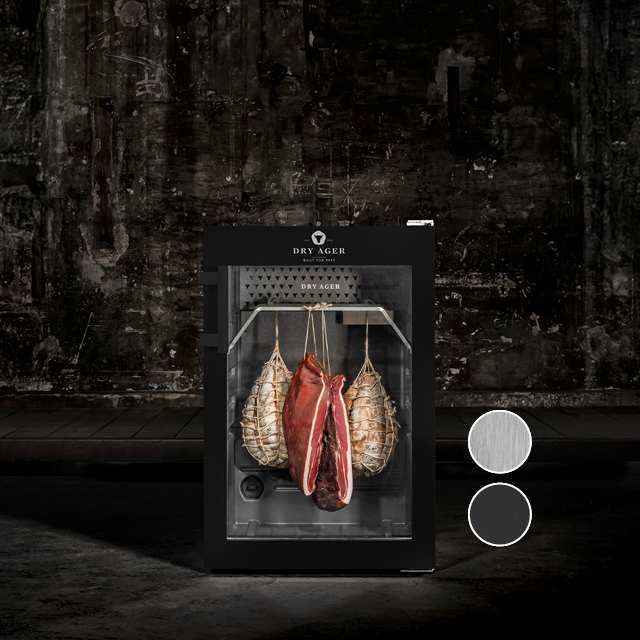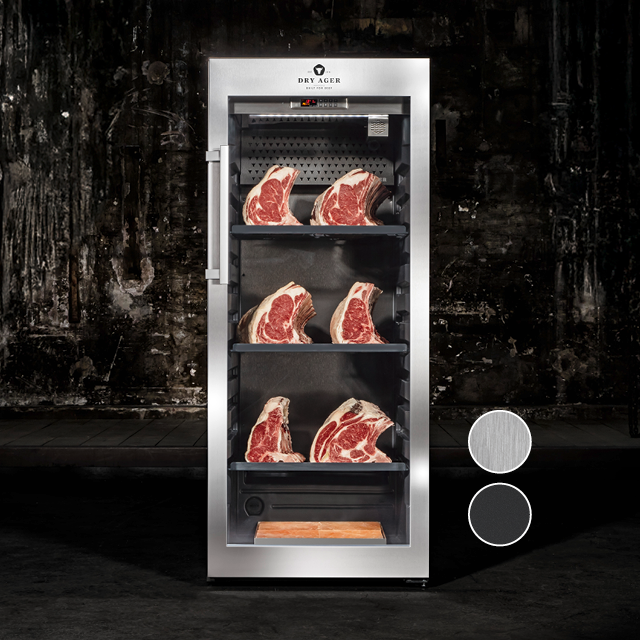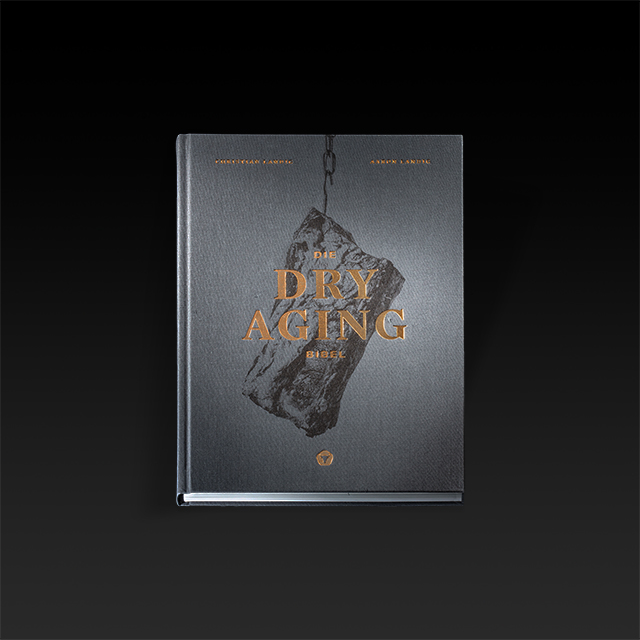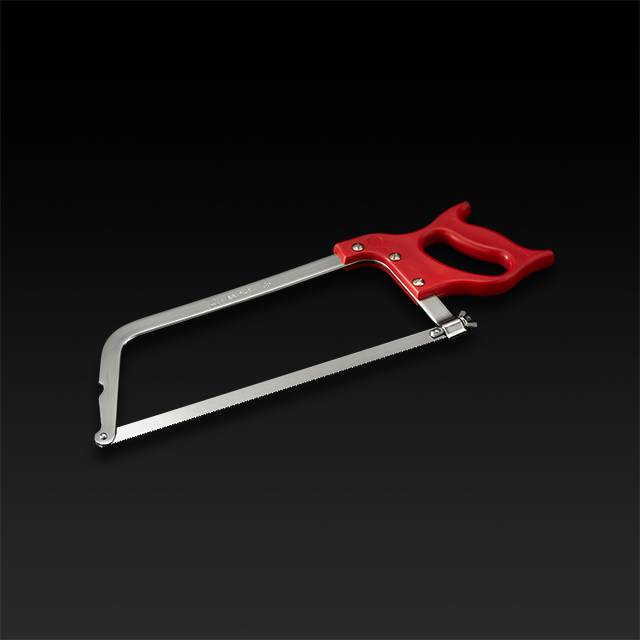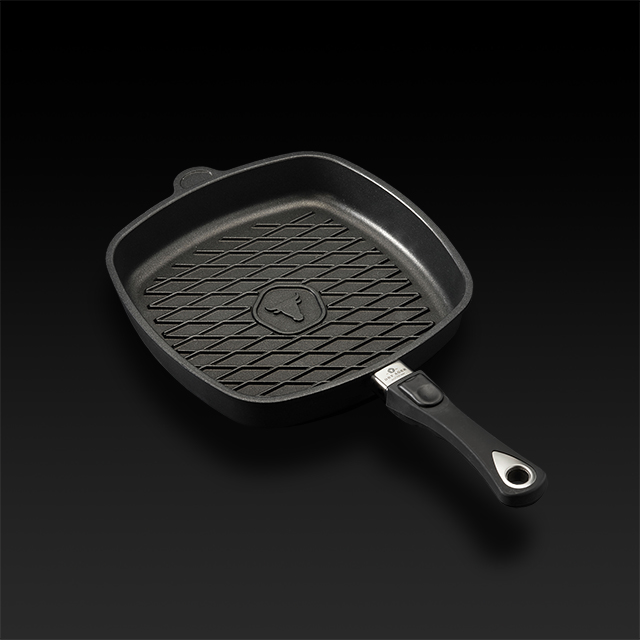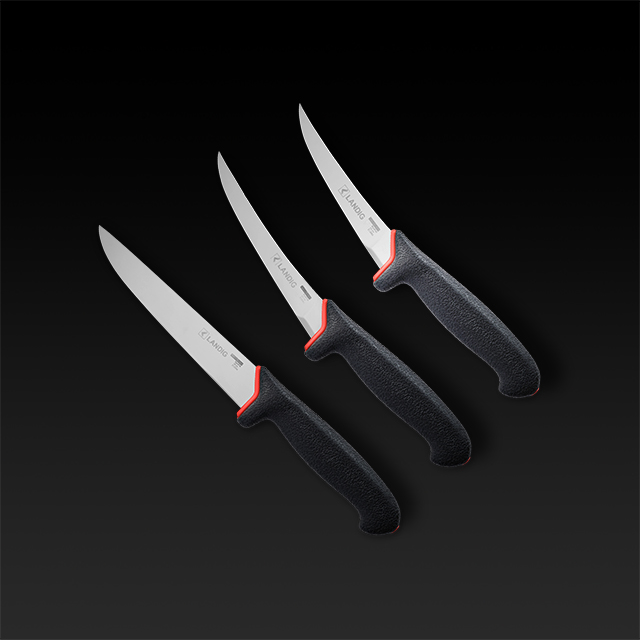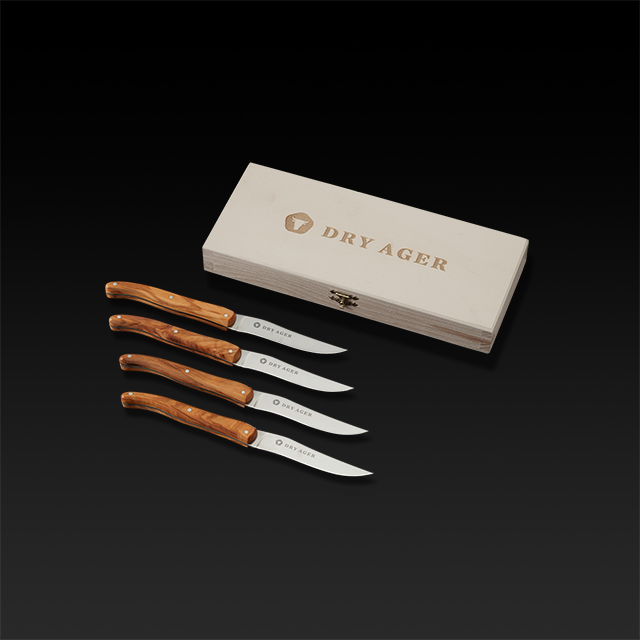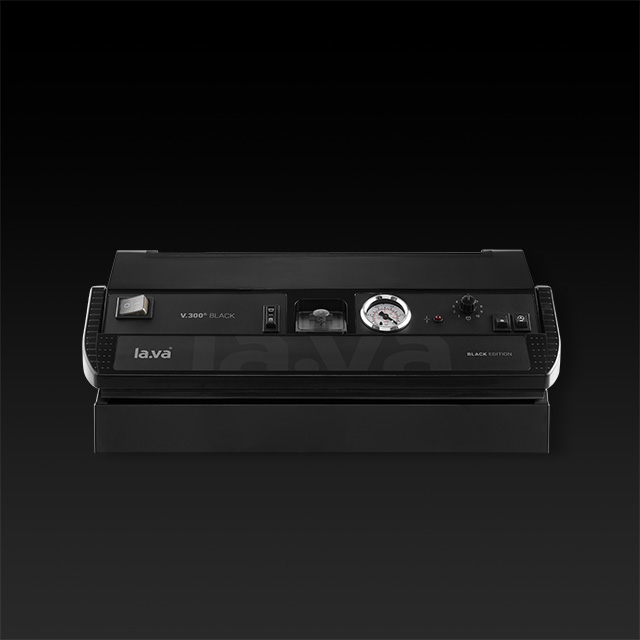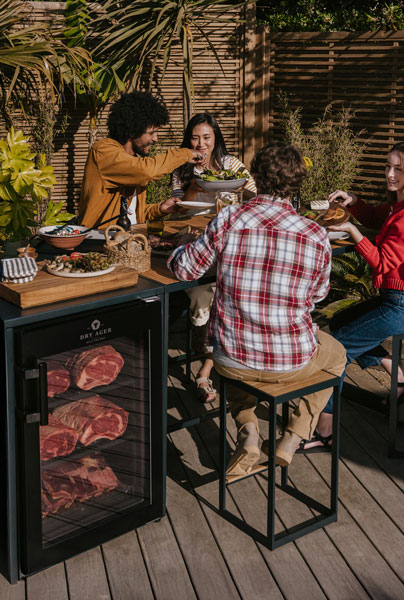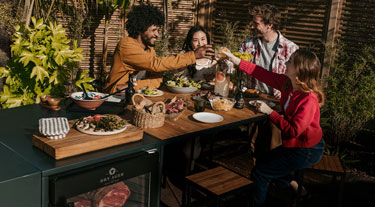MAGAZINE CONTRIBUTION IN BEEF! ® ISSUE 05/15

BEEF! writes: There can only be one meat: dry aged beef. And there can be only one refrigerator: our “Dry Ager”. At home, forever, for you! In addition, we also now offer a Special Edition BEEF! DRY AGER. The following report is a quote from the magazine issue 05 / 2015. You can download the article as PDF: BEEF! Article 05 / 2015 So you mature your own meat.
This is how you mature your meat yourself
There can only be one meat: dry aged beef. And there can be only one refrigerator: our “Dry Ager”. At home, forever, for you!
Photos: Ilja Mess (Reportage) Text: Peter Wagner
The area of Lampertsweiler in deepest Upper Swabia, is the centre of the world. Don’t you know it? Then you are probably not a hunter. From Latvia to Andalusia, hunters who want perfect cooling conditions probably have a game fridge from here. In Lampertsweiler, a peaceful district of Bad Saulgau, 30 kilometres north of Ravensburg, lives the Landig family who run their business supplying customers around the world with game fridges (also known as game coolers). They are also well known for their range of Vacuum Sealers and Sous Vide equipment. Father Manfred (57) and his sons Christian (34) and Aaron (30) are the market leaders and they do not intend this to change in the foreseeable future. Therefore, it can only be expected that they already have a new product in their range: the “Dry Ager”- it’s the first practical refrigerator which even the novice can easily mature their own meat.
About the two sons, but first the father’s outspoken comments: In 2013, there was a buzz about where to eat the best steaks. The dry aging method was discovered again by top chefs and suppliers, with the meat from the loins of cattle, sometimes also of pigs and lambs, matured for more than two months to result in this delicacy. Up until the invention of the vacuum sealer machine in the 1960’s, there were hardly any other ways to mature beef, because it was “dependant” to leave the meat at a controlled temperature, humidity and air quality. What was good for the meat lovers, wasn’t good for the suppliers. The exposed surface of the meat dried and formed an outer crust that would have to be removed. By the end of the process, a piece of meat lost as much as 30% of its weight – and the butcher made 30% fewer sales. The only way to obtain maturity without weight loss was to use a “wet” aged bag, which still resulted in a tender piece of meat. Today, almost any beef produced in Germany has been aged in a plastic bag. This method does, however, leave a sharp metallic flavour that meat eaters have adjusted to. Only recently, with the growing popularity of high-priced steakhouses has it brought the enjoyment of the Dry Age flavour back to people. But where could you buy the alternative to vacuum meat? Dry aging steaks, at a reasonable price, was sought after for a long time in vain.
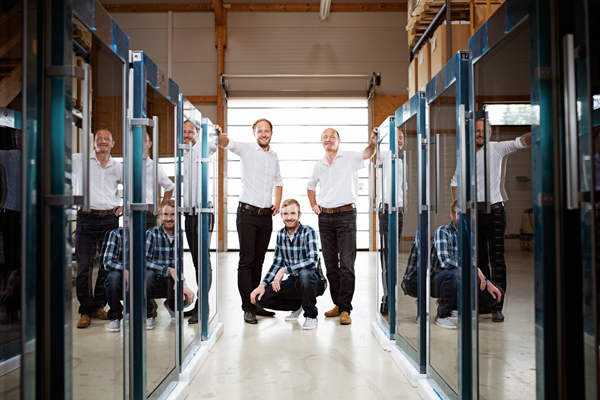
1/ Christian Landig is the driving force of the family, responsible for new products and the marketing
2/ Aaron Landig is refrigeration and air conditioning technician. He developed the “Dry Ager” almost single-handedly
3/ left in 2013 as senior partner and at about the same time gave his sons a free reign of the Landig’s family business.
With the already successful background and the set-up of the accounting, sales and showroom divisions, there is only one way forward for the company to grow and become market leader. From the time the children were at infant school to studying at university, they had discovered a niche in the market place which could be backed up with the qualifications that the sons had mastered. Aaron, like his father, had a master’s degree as a refrigeration and air conditioning technician, his brother a skilled businessman. The father, Manfred, could only give his expert advice when his sons began, they were very much left to it.
Vision: a meat maturing fridge that fits perfectly in terms of hygiene, handling and appearance into the restaurant, in the clubhouse and even in the home. The ready to plug in – 220 volt unit without external water supply – that costs less than 4,000 euros. For butchers and steakhouses, a unit that will pay for itself, after sales from filling the Dry Ager with meat only three times. A realistic calculation, because a high quality, raw side of beef and with a good marble content, for example from a young Hereford (a female heifer before first calving), costs 11 to 18 euros per kilo directly from the slaughter house. After four to six weeks of dry aging, the cuts have doubled in market value – a Dry Aged steak, from a local cattle breed, rarely costs in store less than 50 euros per kilo, sirloin steak of beef cattle breeds such as Angus and Hereford from Ireland, America and Australia or alpine Simmental are even more expensive. The time and the market were right, so it only needed the product. But its development continued, and with Swabian characteristics such as accuracy, ingenuity, efficiency and ambition in the business, one could expect results. While Christian with some clients from large corporate database wondered whether any would be interested in a mature refrigerator for the home, Aaron devoted art. And concluded: A project is even for an experienced refrigeration engineer like him who has designed artificial ice rinks and large cold storage rooms, no small task. “First of all we played about for months with the unit, making sure it kept temperature, humidity and air circulation perfectly at a set value. Then we bought some meat and for weeks observed what happened in the maturation and how we could improve on the unit,” he says, whilst he checked the readings on the data tracker, which were still in the experimental “Ager ” in the office.
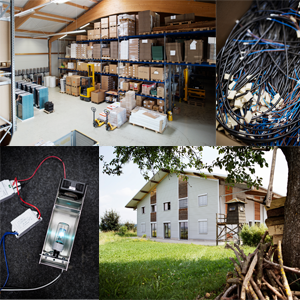
1/ Stainless casings still packed in blue film in the final “Dry Ager” assembly building
2/ Regional is better: Even the small connecting cables allow Landig to source locally
3/ Testing the UVC light system that sterilizes the air circulation
4/ The relatively new office and production building in Bad Saulgau has over time become too small. Soon, another building is to be built next to the meadow
Lots of technique, less space
Normally, meat is hung on hooks to mature in commercial refrigeration facilities in slaughter houses, steakhouses or like, Dry Aging butcher specialists, Ludwig in Northern Hesse or David in Worms.
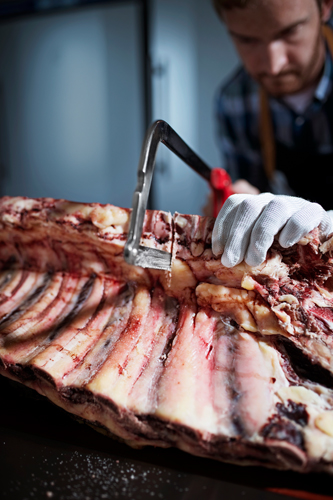 The new Dry Ager, however, works like a domestic refrigerator which compresses the gaseous refrigerant (the Landigs use 45Gramm of environmentally friendly isobutane R-600a), which heats up and liquefies in the thin black coils. In the evaporator, which is located inside the refrigerator, the refrigerant becomes gaseous again, evaporative cooling occurs. Something more was obviously yet do so, and so Aaron sat for months on a chair in front of the experimental unit, changing parameters, adjusting the fan speed, until the meat finally dried, without over drying – or becoming mouldy. The controller must be working accurately, temperature and humidity always at the optimal setting. A lot of technology is necessary. The construction in such a small cabinet was the biggest challenge. “Dry Ager” opens a new chapter in the long history that began in a small building in the middle of Bad Saulgau. In this region of Swabia, there is a concentration of inventors, higher than anywhere else in the country; the Swabian inventors enjoy a high reputation in the world, because they can do almost anything. Where does this concentrated inventiveness come from? “Maybe because of Schwabe background we want to improve on things and make them even better. With determination and our natural prudence, we produce a product as efficiently as possible”, says Christian. “We started very small in the garage, and then only as the business grew and it was financially possible,” says Christian, “we did expand into the communal town where my father, an avid hunter, screwed together the first game refrigerators decades ago.” Today the Landigs build here game refrigerators and refrigeration units – although space is not getting tight. In the field, on the outskirts, a new warehouse is to be built, reveals Christian, right next to the “Dry Ager” barn. There Aaron has almost fully assembled the next cabinet with a technician. It is a delicate operation in such limited space. At the beginning of the assembly, a blank is composed of three parts: a door including triple glazing with UV-resistant metal tint, the outer wall of brushed stainless steel and a dark grey, food gradable plastic inner container with insulating foam filling in between. Manufactured and assembled at the warehouse in Austria by this Swabian company. Finally, in Bad Saulgau, it goes to component assembly. Apart from a tiny lamp holder made of hard plastic, Landig source all components from Europe. “If I do this in China,” says Aaron whilst he fumbles for a short black cable with two plugs from a storage box, “then I might pay 15 cents less per cable. But if there is a problem with supply, I have eight to twelve weeks to wait for a replacement. “And when here, I can just pop to the local supplier and obtain a new one.”
The new Dry Ager, however, works like a domestic refrigerator which compresses the gaseous refrigerant (the Landigs use 45Gramm of environmentally friendly isobutane R-600a), which heats up and liquefies in the thin black coils. In the evaporator, which is located inside the refrigerator, the refrigerant becomes gaseous again, evaporative cooling occurs. Something more was obviously yet do so, and so Aaron sat for months on a chair in front of the experimental unit, changing parameters, adjusting the fan speed, until the meat finally dried, without over drying – or becoming mouldy. The controller must be working accurately, temperature and humidity always at the optimal setting. A lot of technology is necessary. The construction in such a small cabinet was the biggest challenge. “Dry Ager” opens a new chapter in the long history that began in a small building in the middle of Bad Saulgau. In this region of Swabia, there is a concentration of inventors, higher than anywhere else in the country; the Swabian inventors enjoy a high reputation in the world, because they can do almost anything. Where does this concentrated inventiveness come from? “Maybe because of Schwabe background we want to improve on things and make them even better. With determination and our natural prudence, we produce a product as efficiently as possible”, says Christian. “We started very small in the garage, and then only as the business grew and it was financially possible,” says Christian, “we did expand into the communal town where my father, an avid hunter, screwed together the first game refrigerators decades ago.” Today the Landigs build here game refrigerators and refrigeration units – although space is not getting tight. In the field, on the outskirts, a new warehouse is to be built, reveals Christian, right next to the “Dry Ager” barn. There Aaron has almost fully assembled the next cabinet with a technician. It is a delicate operation in such limited space. At the beginning of the assembly, a blank is composed of three parts: a door including triple glazing with UV-resistant metal tint, the outer wall of brushed stainless steel and a dark grey, food gradable plastic inner container with insulating foam filling in between. Manufactured and assembled at the warehouse in Austria by this Swabian company. Finally, in Bad Saulgau, it goes to component assembly. Apart from a tiny lamp holder made of hard plastic, Landig source all components from Europe. “If I do this in China,” says Aaron whilst he fumbles for a short black cable with two plugs from a storage box, “then I might pay 15 cents less per cable. But if there is a problem with supply, I have eight to twelve weeks to wait for a replacement. “And when here, I can just pop to the local supplier and obtain a new one.”
The top priority: Hygiene
An employee hands Aaron a black plastic tray, the so-called light housing that fits into the slot at the top. This includes the LED lighting, to show off the meat to it’s best. But the boards for the lighting control, the moisture sensor, a transformer and the door contact to switch off the fan, so that no external heat is pulled into the unit with the door open. The one most important part of the fridge, however, is the main controller for temperature and humidity. It should be set at 85% humidity and a temperature of 1.5 °C. But this controller including the water resistant bulb is expensive to purchase costing more than 200 Euros and is exclusively made in Italy for Landig. When you want perfection you have to pay for it. Aaron spent six months programming the software for the controller. In order for the refrigerator to have total accuracy worldwide, he monitored 150 parameters until he had the exact values: electronic adjustment of the humidity of +/- 1 % and the temperature +/- 0.1 ° C. The air circulates through the cabinet: drawn upward through the lasered bull heads in the metal rear panel, along both sides of the evaporator, back down in the fridge and along the hanging meat strip loins. A precision that is essential for a professional meat maturing system: Otherwise mould and bacteria will grow on the meat resulting in meat that cannot be used or, even worse, food poisoning. During Aaron’s development time of one and half years, he had to be sure that such incidents didn’t occur. The “Dry Ager” draws its air through an antibacterial active carbon filter on the back and executes it once per minute to the top-mounted sanitizer past a closed metal box, in which a UVC bulb glows (can damage the eyes when looked at directly). This kills all passing airborne germs.
The sanitary system works perfectly even if you open the door four times an hour drawing in contaminated air. Nevertheless, the fear was great when the Landig brothers suspended the first pieces of meat in the fridge a few months ago: Would the “Dry Ager” let the meat mature reliably? Would any mould grow, was the fat cover good enough, what about the exposed ends or would there be uneven bone bleeds? “During the first ten weeks of the meat maturing, a piece of the outer crust and a sample of the meat together with a swab taken from the interior walls of the fridge were sent to a laboratory”, says Aaron. “Even the very oldest sample was given the all clear and it just tasted wonderful!” During the months of testing a lot of meat was consumed by the Landig family for marketing purposes! “We must have had at least 50 beef loins during this time” estimates Christian. It was the only way to learn because none of the Landig’s were trained in butchery, but are just laymans like most other meat lovers who would like a “Dry-Ager” in their home. Aaron has acquired a lot of knowledge about dry aging over the past two and a half years. “I have spoken a lot with butchers specialising in dry Aging mature sides of beef,” he says. He passes on his knowledge to the customers in the form of step-by-step photo instructions and soon via web videos on the Landig website. In addition, in each fridge there is a small booklet with: How do I find the right butcher, what meat should I buy and how do I transport it home without interrupting the cold chain? Most problems eventually arise due to lack of hygiene even before it is even placed in the “Dry Ager”. Not all local butchers or slaughter houses can ensure the high cleanliness requirements of subsequent dry aging. So best buy the meat for the “Dry Ager” directly from a well known source or order your meat online together with the “Dry Ager”.
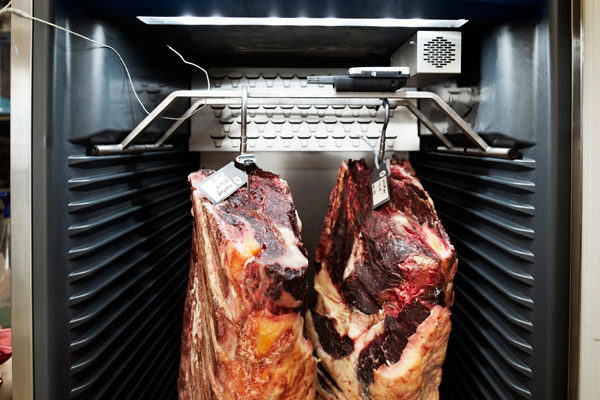 Even vegetarians have shown an interest in this piece of equipment, Christian remembers, “at our last fair, they stopped on our stand and admired the Dry Ager.” They had never seen meat looking so aesthetically pleasing. It was not bloody, but looked dull, dry and very beautiful. The young inventor who could protect the relevant technical innovations with five utility patents, passed their matriculation examination with flying colours. “If I could, I would put the” Dry Ager” into the living room,” says Aaron, but his wife is very much against it.
Even vegetarians have shown an interest in this piece of equipment, Christian remembers, “at our last fair, they stopped on our stand and admired the Dry Ager.” They had never seen meat looking so aesthetically pleasing. It was not bloody, but looked dull, dry and very beautiful. The young inventor who could protect the relevant technical innovations with five utility patents, passed their matriculation examination with flying colours. “If I could, I would put the” Dry Ager” into the living room,” says Aaron, but his wife is very much against it.
In the showroom with the Landigs and a four week ripened loin from a local Swabian Simmental. Dull places the meat on the butchers block. It is half a hundredweight and black brown exterior. Now, as a master butcher, Aaron puts the bone saw on the line and cuts the back bone within a few seconds. Just a quick cut with a sharp butcher’s knife (professional tools available as an accessory on the “Dry Ager” website) and already there are two sirloin quarters. A few cuts more and Aaron has nimbly portioned some fantastic T-Bone steaks. Dinner is sorted!
That’s Dry Aging
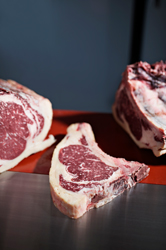
With the invention of vacuum packing machines in the 1960s almost every Steak was dry aged, ie matured dry – the sides of beef were hung on a hook in the refrigerator of the slaughterhouse, then the meat after two to three weeks was sold as “well hung”. Today, only less than five percent of the steaks sold do not come from vacuum ripening bags, in which the meat takes on a metallic flavour. Overtime, however, the demand for dry-aged meat has been spurred on again by noble steakhouses. During the first three weeks in the “Dry Ager” the meat is tenderised, after which it only improves in flavour. The moisture in the fibres evaporates slowly and evenly, sweet carbohydrates and umami tasting protein fragments become more concentrated and the natural flavour of the meat is brought alive. In addition, the gentle oxidisation of saturated fatty acids in the intramuscular fat veins, contributes to a nutty flavour. A beef steak is produced, which is as delicate as wet matured meat, but creates a crisp yet juicy sensation which develops into an abundance of flavours that the beef inserts.
DRY AGED FAT is deep, more than just a taste sensation: the meat fibres obtain their own unique structure and flavour. Pronounced fat covers this club steak (Strip Loin) by oxidation of saturates a nutty note is present.
